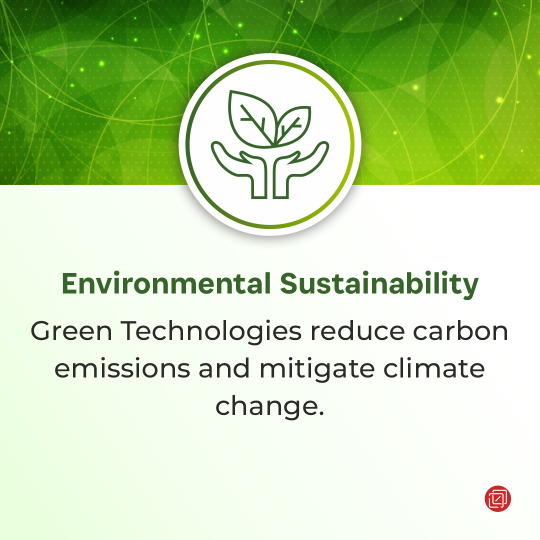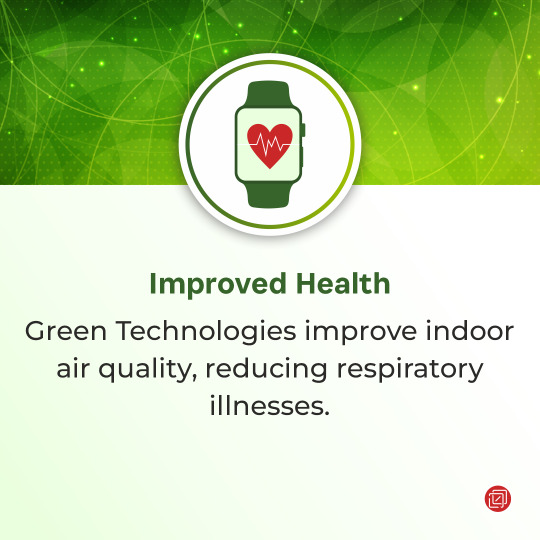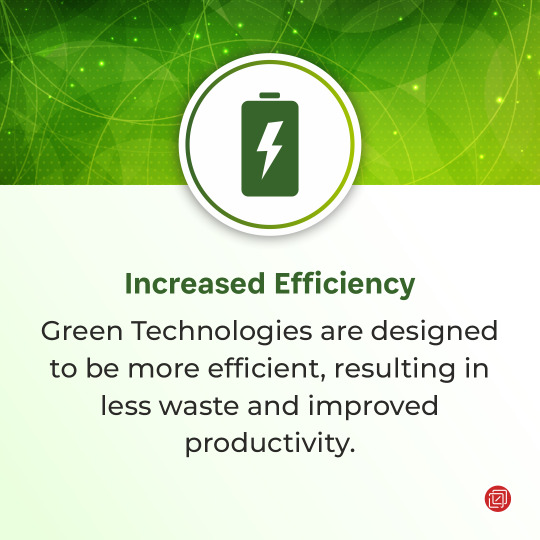#environmental sustainability
Text
The Philosophy of Scarcity
The philosophy of scarcity is a perspective or worldview that centers on the belief that resources are limited and insufficient to satisfy all human wants and needs. It acknowledges the fundamental reality that there are finite resources available in the world, and that individuals, organizations, and societies must make choices about how to allocate these resources among competing uses. The philosophy of scarcity influences attitudes, behaviors, and decision-making processes in various aspects of life, including economics, politics, and social relations. Here are some key aspects of the philosophy of scarcity:
Resource Limitation: At its core, the philosophy of scarcity recognizes that resources such as land, labor, capital, and raw materials are limited in supply relative to the demand for them. This scarcity of resources necessitates trade-offs and choices about how to allocate scarce resources efficiently and effectively to meet competing needs and desires.
Opportunity Cost: One of the central concepts in the philosophy of scarcity is opportunity cost, which refers to the value of the next best alternative forgone when a decision is made. Every decision involves trade-offs, and choosing to allocate resources to one use necessarily means sacrificing the opportunity to use those resources for other purposes.
Competition and Allocation: Scarcity leads to competition among individuals, organizations, and nations for access to limited resources. In economic systems, markets play a central role in allocating scarce resources through mechanisms such as price signals, supply and demand dynamics, and market mechanisms. Government intervention and regulation may also influence resource allocation in response to perceived market failures or social objectives.
Rational Choice Theory: The philosophy of scarcity is often associated with rational choice theory, which posits that individuals make decisions based on rational calculations of costs and benefits to maximize their utility or satisfaction given limited resources. Rational decision-making involves weighing the benefits and costs of different options and choosing the one that yields the greatest net benefit.
Scarcity Mindset: Beyond its economic implications, the philosophy of scarcity can manifest as a scarcity mindset, characterized by a pervasive sense of lack or insufficiency. Individuals with a scarcity mindset may feel anxious, competitive, and preoccupied with acquiring and hoarding resources out of fear of deprivation or loss. This mindset can influence behaviors related to consumption, saving, and interpersonal relationships.
Distributional Justice: Scarcity raises questions about fairness and distributional justice in the allocation of resources within societies. Debates over economic inequality, poverty, social welfare programs, taxation, and redistribution policies often reflect competing values and principles regarding how scarce resources should be distributed to ensure equitable outcomes and promote social cohesion.
Environmental Sustainability: The philosophy of scarcity also intersects with concerns about environmental sustainability and the finite carrying capacity of the Earth's ecosystems to support human populations and economic activities. Addressing environmental degradation, resource depletion, and climate change requires recognizing and mitigating the impacts of resource scarcity on ecological systems and future generations.
Overall, the philosophy of scarcity underscores the importance of recognizing and addressing the inherent limitations of resources in human societies, and the need for thoughtful decision-making and resource management strategies to navigate the challenges posed by scarcity.
#philosophy#epistemology#knowledge#learning#chatgpt#education#ethics#economic theory#economics#scarcity#Resource scarcity#Opportunity cost#Competition#Rational choice theory#Scarcity mindset#Distributional justice#Environmental sustainability#Economic decision-making#Market allocation#Social welfare
2 notes
·
View notes
Text
The practice of raking leaves, putting them in bags, and then having the local sanitation department haul them off to some landfill is both wasteful and counterproductive.
As leaves across America make their annual autumn pilgrimage from the treetops to the ground, lawn and wildlife experts say it's better to leave them around than to bag them.
First, because it keeps leaves out of landfills. Every year, about 8 million tons of leaves end up there.
And second, because leaves help the grass.
Leaves are full of nutrients, including nitrogen, phosphorus and potassium.
"Those nutrients are being returned to the soil," Susan Barton, a professor and extension specialist in landscape horticulture at the University of Delaware, told NPR. "But probably even more important than that, it's the organic matter. It's the fact that you've got this tissue that then eventually decomposes and improves the soil health."
They also provide a habitat for insects, spiders, slugs — and depending on where you live — possibly turtles, toads and small mammals, according to the University of Delaware's College of Agriculture & Natural Resources.
At most, just run a lawn mower (preferably a hand powered mower) over the leaves to cut them into small pieces. Then sweep away any leaf debris from sidewalks and driveway. Repeat if necessary.
If you have space, you can also collect and compost leaves to use as a mulch for plants next spring.
These are climate friendly ways of marking autumn.
Some cities actually collect leaves for composting at a central facility, where it turns to mulch that residents can collect for free. On the other hand, leaves in landfills that don't have enough oxygen to decompose will end up releasing a significant amount of methane.
How people deal with leaves is just one part of a longer-term issue of environmental sustainability.
#the environment#autumn#fall#leaves#climate change#climate friendly gardening#composting#mulching#environmental sustainability
4 notes
·
View notes
Text
Why I Made the Switch to Step One
I have recently had the pleasure of trying out Step One. This is why you might want to make the switch.
Whether you are a boxer, briefs, or “going free” type of guy, there is no doubt that many of us can do more to protect our bits. Thankfully, some innovations are coming out in the men’s underwear space, and they have truly changed the game. I have recently had the pleasure of trying out the frontrunner, Step One and they are right when they say that “once people try Step One they will want to…

View On WordPress
#3D pouch design#Active lifestyle support#Anti-bacterial#Anti-fungal properties#Chafing solution#Closed water system usage#Comfort and fit focus#Community support#Eco-friendly apparel choice#Environmental sustainability#Ethical production standards#Fair wages#Fashion Forever Green Pact signatory#Local community benefits#Men&039;s underwear innovation#Moisture-wicking#Multiple wear benefits#Protection against plant and animal harm#Rapid bamboo growth#Reduced environmental impact#Species protection#Step One review#Sustainable manufacturing practices#Ultraglyde panel feature#Underwear drawer overhaul#Zero deforestation commitment
2 notes
·
View notes
Text

In this entry, I will document notes on an emerging topic:
Scientists in the health industry may seek to collaborate with the beekeeping industry for pathogen surveillance.
Like a cotton swab, the fuzzy body of a bee collects microbes and other tiny particles while it forages for food and resources. The sample size appears large enough for scientists to detect illnesses and threats amongst a human population.
According to editor Linda Poon for Bloomberg, "the study has begun in New York City where researchers were able to find a diversity of species- including bacteria associated with plants- and human-related pathogens." In Venice, Italy, researchers have collected samples containing fungi related to wood rot where residence buildings sit atop wooden pilling submerged in water.
Similarly, in Tokyo, Poon states that researchers have found genetic traces of a fermenting yeast commonly used in soy sauce production and miso paste.
(How fascinating!)
Reference: https://www.bloomberg.com/news/articles/2023-03-30/honeybees-are-predictors-of-a-city-s-health-new-research-finds
#cherish-a-bee#protect the bees#save the bees#environmental sustainability#world bee day#honey bees#honeybee#bees art#bees#beekeeping#bee lovers#bee awareness#human health
11 notes
·
View notes
Photo

Christian Gralingen for IEEE Spectrum Magazine.
#christian gralingen#gif#illustration#debut art#editorial#technical#car#environmental sustainability#mixed media#technology
5 notes
·
View notes
Photo




Saving the planet starts with us - and that's where Green Technologies come in! 🌍💻
From renewable energy sources to sustainable manufacturing processes, these technologies are leading the way toward a greener future. 🌿 Learn more about how you can make a difference today.
#save planet#green technology#sustainable#greener future#environmental sustainability#cost savings#improved health#increased efficiency
5 notes
·
View notes
Link
In light of the 27th session of the Conference of the Parties (COP27) to the United Nations Framework Convention on Climate Change (UNFCCC), check out our blog post where you will read about COP26 and helpful tips on how you can continue the fight against climate change ✊!
#hrcblog#cop 26#cop 27#climate change#climate crisis#climate justice#climate activism#global warming#environment#environmental#environmentalism#environmental activism#environmental awareness#environmental sustainability#environment conservation#conservation#environment protection#eco friendly#sustainability#sustainable#sustainability goals#only one earth#save earth#save our planet#save the planet
2 notes
·
View notes
Text
"if you are a foreigner that wants to teach english in japan, and you couldn't come to japan, what would be your dream job?"
— dogen (youtuber)
#june shines#this was a really good thing for me to mull over#my initial response was to be a language teacher because YES that would be wonderful#but idk#i'm also thinking about#environmental sustainability#like seriously now#but that's SO much harder#but yes#i could easily do that in japan too#there are a lot of things one could do#in japan#that aren't necessarily teaching english#still like#there's just the opposite side of it for me#which is that i want to teach english as a foreign language and idc where i am in the world#so#idk.#COULD DO BOTH#NOTHING'S STOPPING ME FROM DOING ONE FOR AWHILE AND THEN DOING ANOTHER#realizing that english teacher could be a plan b or just one part of a life of many careers#is very inviting#what's stopping me from getting a ba in environmental and sustainability studies and then using it 10 years afterwards#or upgrading#or#whatever the hell i want if i just want a ba might as well do something i'm interested in UNFORTUNATELY i am interested in a SHIT TON#not math tho#i love math but i could never get behind all that conceptual nonesense#ANYWAYS#hello im thinkin too hard
5 notes
·
View notes
Video
Last Second Newark Power Plant: Gov. Murphy Stops
Newark Power Plant Construction would create unnecessary, additional pollution for Newark
*All statistics in this piece came from the proposed plant’s air permit application and the United States Department of Energy*
Link to the Inspiration for this Piece (Click Here)
#Newark Energy#Governor Murphy Vote#Power Plant Construction#Environmental Sustainability#Essex County Energy#Northern NJ Power#Ironbound Community Corporation
2 notes
·
View notes
Text
No paywall version here.
"Two and a half years ago, when I was asked to help write the most authoritative report on climate change in the United States, I hesitated...
In the end, I said yes, but reluctantly. Frankly, I was sick of admonishing people about how bad things could get. Scientists have raised the alarm over and over again, and still the temperature rises. Extreme events like heat waves, floods and droughts are becoming more severe and frequent, exactly as we predicted they would. We were proved right. It didn’t seem to matter.
Our report, which was released on Tuesday, contains more dire warnings. There are plenty of new reasons for despair. Thanks to recent scientific advances, we can now link climate change to specific extreme weather disasters, and we have a better understanding of how the feedback loops in the climate system can make warming even worse. We can also now more confidently forecast catastrophic outcomes if global emissions continue on their current trajectory.
But to me, the most surprising new finding in the Fifth National Climate Assessment is this: There has been genuine progress, too.
I’m used to mind-boggling numbers, and there are many of them in this report. Human beings have put about 1.6 trillion tons of carbon in the atmosphere since the Industrial Revolution — more than the weight of every living thing on Earth combined. But as we wrote the report, I learned other, even more mind-boggling numbers. In the last decade, the cost of wind energy has declined by 70 percent and solar has declined 90 percent. Renewables now make up 80 percent of new electricity generation capacity. Our country’s greenhouse gas emissions are falling, even as our G.D.P. and population grow.
In the report, we were tasked with projecting future climate change. We showed what the United States would look like if the world warms by 2 degrees Celsius. It wasn’t a pretty picture: more heat waves, more uncomfortably hot nights, more downpours, more droughts. If greenhouse emissions continue to rise, we could reach that point in the next couple of decades. If they fall a little, maybe we can stave it off until the middle of the century. But our findings also offered a glimmer of hope: If emissions fall dramatically, as the report suggested they could, we may never reach 2 degrees Celsius at all.
For the first time in my career, I felt something strange: optimism.
And that simple realization was enough to convince me that releasing yet another climate report was worthwhile.
Something has changed in the United States, and not just the climate. State, local and tribal governments all around the country have begun to take action. Some politicians now actually campaign on climate change, instead of ignoring or lying about it. Congress passed federal climate legislation — something I’d long regarded as impossible — in 2022 as we turned in the first draft.
[Note: She's talking about the Inflation Reduction Act and the Infrastructure Act, which despite the names were the two biggest climate packages passed in US history. And their passage in mid 2022 was a big turning point: that's when, for the first time in decades, a lot of scientists started looking at the numbers - esp the ones that would come from the IRA's funding - and said "Wait, holy shit, we have an actual chance."]
And while the report stresses the urgency of limiting warming to prevent terrible risks, it has a new message, too: We can do this. We now know how to make the dramatic emissions cuts we’d need to limit warming, and it’s very possible to do this in a way that’s sustainable, healthy and fair.
The conversation has moved on, and the role of scientists has changed. We’re not just warning of danger anymore. We’re showing the way to safety.
I was wrong about those previous reports: They did matter, after all. While climate scientists were warning the world of disaster, a small army of scientists, engineers, policymakers and others were getting to work. These first responders have helped move us toward our climate goals. Our warnings did their job.
To limit global warming, we need many more people to get on board... We need to reach those who haven’t yet been moved by our warnings. I’m not talking about the fossil fuel industry here; nor do I particularly care about winning over the small but noisy group of committed climate deniers. But I believe we can reach the many people whose eyes glaze over when they hear yet another dire warning or see another report like the one we just published.
The reason is that now, we have a better story to tell. The evidence is clear: Responding to climate change will not only create a better world for our children and grandchildren, but it will also make the world better for us right now.
Eliminating the sources of greenhouse gas emissions will make our air and water cleaner, our economy stronger and our quality of life better. It could save hundreds of thousands or even millions of lives across the country through air quality benefits alone. Using land more wisely can both limit climate change and protect biodiversity. Climate change most strongly affects communities that get a raw deal in our society: people with low incomes, people of color, children and the elderly. And climate action can be an opportunity to redress legacies of racism, neglect and injustice.
I could still tell you scary stories about a future ravaged by climate change, and they’d be true, at least on the trajectory we’re currently on. But it’s also true that we have a once-in-human-history chance not only to prevent the worst effects but also to make the world better right now. It would be a shame to squander this opportunity. So I don’t just want to talk about the problems anymore. I want to talk about the solutions. Consider this your last warning from me."
-via New York Times. Opinion essay by leading climate scientist Kate Marvel. November 18, 2023.
#WE CAN DO THIS#I SO TRULY BELIEVE THAT WE CAN DO THIS#WE CAN SAVE OURSELVES AND THE WORLD ALONG WITH US#climate crisis#united states#climate change#conservation#hope posting#sustainability#climate news#climate action#climate emergency#fossil fuels#global warming#environmentalism#climate hope#solarpunk#climate optimism#climate policy#earth#science#climate science#meteorology#extreme weather#renewable energy#solar power#wind power#renewables#carbon emissions#climate justice
33K notes
·
View notes
Text
Earth Month and Indigenous Resurgence: Reclaiming Our Place in the Circle of Life

View On WordPress
#balance#biodiversity#City Nature Challenge#Community Engagement#conservation#CULTURAL HERITAGE#Earth Awareness#Earth Month#Earth Protection#environmental advocacy#environmental justice#environmental renewal#environmental stewardship#environmental sustainability#Friends of the Saskatoon Afforestation Areas#George Genereux Urban REgional Park#gratitude#harmony#healing#Holistic Healing#Indigenous knowledge#Indigenous Resurgence#indigenous rights#Indigenous Wisdom#Interconnected Worldview#interconnectedness#love#Mother Earth#planetary health#Reciprocity
0 notes
Text

May 20th is National Honeybee Awareness Day!
To prepare, you can view the hyperlink above for my senior thesis flipbook to learn more about ways to get involved on World Bee Day and fun facts about the current honeybee climate. 🐝
Rules
_____
Do not repost my work
If sharing, credit or mentioning Cherish-A-Bee is appreciated!
n _ n
Thank you community for your support on this journey! : @match-less-bee-bud @princepokemon @woo-sustainability @carefortheearth @pravum-vulpes-umbra-imperatrix @sonic-toon @issadaeee @shuttledick @not-a-crow-i-swear
#protect the bees#save the bees#bee lovers#world bee day#bee awareness#bee lover#bees#cherish-a-bee#honey bees#honeybee#national bee awareness day#environmental sustainability#protect pollinators#pollinators#bee posts#beekeeping#bee art
9 notes
·
View notes
Text

What Are The Sustainable Development Goals Set By The United Nations?
The United Nations established 17 worldwide goals known as the UN Sustainable Development Goals (SDGs) as part of the 2030 Agenda for Sustainable Development.
Read more:- https://www.linkedin.com/pulse/what-sustainable-development-goals-set-united-nations-pranjal-singh-6n3ac/
#How to achieve Sustainable Development Goals#environmental sustainability#UN Sustainable Development Goals
1 note
·
View note
Text
Harnessing Microlearning: A Sustainable Approach to Educating on Business Sustainability

Introduction:
In an era marked by growing environmental concerns and social responsibility, businesses face increasing pressure to adopt sustainable practices. From reducing carbon emissions to promoting ethical supply chains, the concept of business sustainability encompasses a wide range of initiatives aimed at minimizing environmental impact and fostering social well-being. To effectively educate employees on the principles of sustainability and integrate sustainable practices into organizational culture, businesses are turning to innovative approaches such as microlearning. In this article, we'll explore how microlearning can be leveraged to teach business sustainability, empowering organizations to cultivate a more environmentally and socially conscious workforce.
Understanding Business Sustainability:
Business sustainability, often referred to as corporate sustainability or environmental, social, and governance (ESG) practices, involves integrating economic, environmental, and social considerations into business operations and decision-making processes. Sustainable businesses strive to balance profit generation with environmental stewardship, social equity, and ethical governance, aiming to create long-term value for all stakeholders. Key components of business sustainability include:
Environmental Stewardship: Minimizing resource consumption, reducing waste generation, and mitigating environmental impact through sustainable practices such as energy efficiency, waste reduction, and pollution prevention.
Social Responsibility: Promoting social equity, diversity, and inclusion within the workforce, supporting local communities, and upholding human rights throughout the supply chain.
Economic Viability: Ensuring financial stability and long-term profitability through sustainable business practices that consider environmental and social factors alongside economic considerations.
The Role of Microlearning in Teaching Business Sustainability:
Microlearning, characterized by short, focused learning modules delivered in bite-sized formats, offers a unique opportunity to educate employees on the principles of business sustainability:
Bite-sized Content: Microlearning breaks down complex sustainability concepts into easily digestible modules, focusing on specific topics such as energy conservation, waste management, and ethical sourcing. By delivering content in manageable chunks, microlearning makes it easier for learners to grasp and retain information.
Just-in-Time Learning: Microlearning provides just-in-time access to relevant sustainability information, allowing employees to access training materials whenever they need them. Whether it's a quick refresher on recycling guidelines or a primer on sustainable procurement practices, microlearning enables employees to find the information they need quickly and conveniently.
Interactive Engagement: Microlearning modules often incorporate interactive elements such as quizzes, simulations, and case studies to engage learners and reinforce key concepts. Interactive exercises encourage active participation and critical thinking, helping employees apply sustainability principles to their roles effectively.
Personalized Learning Pathways: Microlearning platforms may offer personalized learning pathways tailored to each learner's preferences, knowledge level, and learning pace. By providing customized content recommendations and adaptive learning experiences, organizations can ensure that employees receive training that is relevant, engaging, and impactful.
Benefits of Using Microlearning for Teaching Business Sustainability:
Leveraging microlearning for teaching business sustainability offers several benefits for organizations:
Increased Awareness: Microlearning raises awareness of sustainability issues and practices among employees, fostering a culture of environmental and social responsibility within the organization. By educating employees on the importance of sustainability and the role they play in driving positive change, organizations can inspire greater commitment to sustainable practices.
Enhanced Engagement: The interactive nature of microlearning modules captures learners' attention and maintains their engagement throughout the training process. Employees are more likely to actively participate in sustainability education initiatives and apply their knowledge to make sustainable choices in their day-to-day work.
Improved Retention: Microlearning's focus on delivering bite-sized, easily digestible content improves information retention compared to traditional training methods. By reinforcing learning through spaced repetition and retrieval practice, organizations can ensure that employees retain and apply sustainability knowledge over time.
Practical Application: Microlearning modules often include real-world examples and case studies that illustrate the practical application of sustainability principles in various business contexts. By providing concrete examples of sustainable practices and their impact, organizations empower employees to integrate sustainability into their decision-making processes and daily routines.
Implementing Microlearning for Teaching Business Sustainability:
To effectively implement microlearning for teaching business sustainability, organizations should follow these best practices:
Define Learning Objectives: Clearly define learning objectives for sustainability education initiatives, focusing on key sustainability topics or concepts relevant to employees' roles.
Develop Bite-sized Modules: Create short, focused microlearning modules that cover specific sustainability topics or skills. Keep modules concise and focused to prevent information overload and maximize retention.
Incorporate Interactive Elements: Integrate interactive elements such as quizzes, simulations, case studies, and scenario-based exercises into microlearning modules to engage learners and reinforce key concepts.
Provide Ongoing Support: Offer ongoing support and reinforcement to learners throughout the sustainability education process. Provide access to resources, feedback, and coaching to help employees apply sustainability principles effectively.
Measure Learning Outcomes: Use learning analytics to track learners' progress and assess the effectiveness of sustainability education initiatives. Monitor completion rates, quiz scores, and feedback to identify areas for improvement and inform future training strategies.
Conclusion:
Microlearning presents a powerful tool for educating employees on the principles of business sustainability and fostering a culture of environmental and social responsibility within organizations. By delivering bite-sized, interactive content that is accessible anytime, anywhere, organizations can engage employees and drive meaningful behavior change. As businesses continue to prioritize sustainability in their operations, leveraging microlearning for sustainability education will become increasingly essential for fostering a culture of environmental stewardship and social responsibility.
#sustain ability#sustainability sustainable#going greener#define sustainability#sustainable companies#economic sustainability#environmental sustainability#environmental companies#business and sustainability#sustainability meaning#green companies#social sustainability#three pillars of sustainability#sustainability as a business#examples of sustainability#pillars of sustainability#environment and sustainability#companies and sustainability#marketing for sustainability#environmentally responsible companies#business in sustainability#sustainability in corporations#sustainability what does it mean#business & sustainability#business that are sustainable#environmental friendly company#sustainability and the economy#three sustainability pillars#business environmentalism#environmentally conscious company
0 notes
Text
A Deep Dive into Zinc-Air Battery Technology: Harnessing the Power of Zinc-Air Battery

Zinc-Air Battery technology has emerged as a promising contender in the field of energy storage, offering several advantages over traditional battery systems. In this blog post, we will explore the intricacies of Zinc-Air Battery technology and its potential to revolutionize the way we store and utilize energy.
Understanding Zinc-Air Battery Chemistry
At the heart of Zinc-Air Battery technology lies its unique electrochemical reaction, which involves the oxidation of zinc and the reduction of oxygen from the air.
This reaction generates electrical energy, making Zinc-Air Batteries an efficient and eco-friendly option for energy storage.
Unprecedented Energy Density
One of the most significant advantages of Zinc-Air Battery is their exceptional energy density.
Compared to other battery technologies, Zinc-Air Batteries can store a larger amount of energy per unit weight, making them ideal for applications requiring long-duration energy storage, such as electric vehicles and grid-scale energy storage systems.
Renewable Energy Integration
Zinc-Air Batteries hold immense potential for integrating renewable energy sources into the grid.
Their high energy density and scalability make them well-suited for storing surplus energy generated from sources like solar and wind power, thus overcoming the intermittent nature of renewable energy production and enabling a smoother transition to a sustainable energy future.
Cost-Effectiveness and Accessibility
Zinc-Air Battery technology offers cost-effective energy storage solutions, thanks to its abundant and low-cost raw materials, such as zinc and air.
Additionally, Zinc-Air Batteries are relatively simple to manufacture and maintain, making them accessible to a wide range of applications, from consumer electronics to large-scale energy storage projects.
Get More Insights On This Topic: Zinc-Air Battery
#Zinc-Air Battery#Energy Storage#Renewable Energy#Battery Technology#Sustainable Energy#Innovation#Electrochemistry#Environmental Sustainability
0 notes